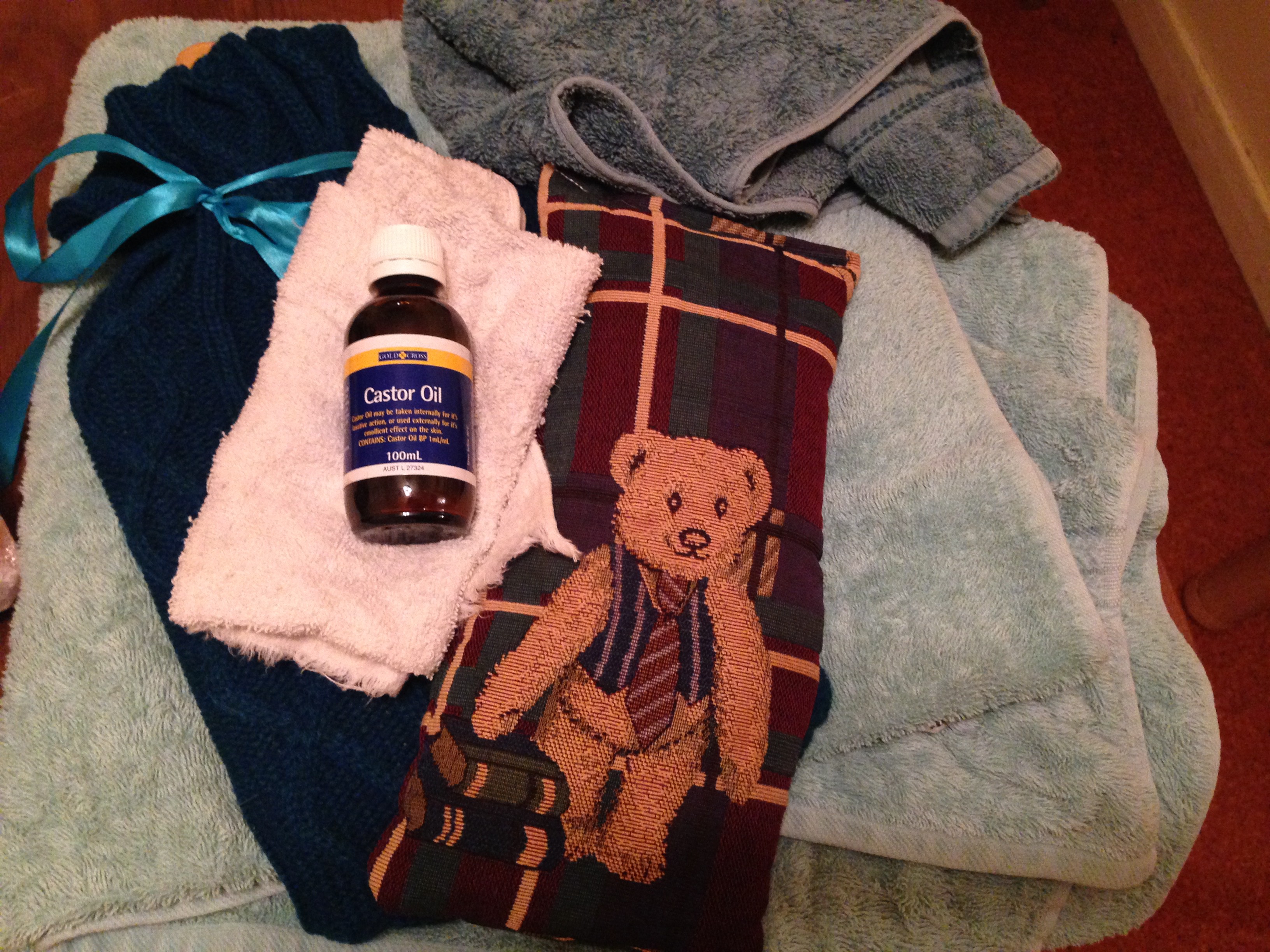“The cure for our modern maladies is dirt under the fingernails and the feel of thick grass between the toes. The cure for our listlessness is to be out within the invigorating wind. The cure for our uselessness is to take back up our stewardship; for it is not that there has been no work to be done, we simply have not been attending to it.”
~ L.M. Browning, Ruminations at Twilight: Poetry Exploring the Sacred
I’m a big fan of castor oil compresses. Got inflammation in an organ or joint? Stiffness or pain? Constipation? Sluggish liver? Weak immune system? Fibroids? Ovarian cysts? Tendonitis? Irritable bowel or diverticulitis? Pelvic pain? Infection? Castor oil compresses help with all of these things. They are anti-inflammatory, anti-bacterial, lubricating, and stimulate circulation and the production of lymphocytes.
A castor oil compress involves placing a cloth soaked in castor oil over the affected area, and then applying heat to encourage the oil to penetrate into the body.
Here’s how you can make one for yourself or a loved one:
Materials:
- Castor oil (you’ll need a minimum of 100ml, but have more on hand)
- A large square of soft flannel, such as from an old towel
- Some old towels
- A bowl to hold the cloth while you soak it in oil
- A hot water bottle or heat pack
- A plastic bag or large square of plastic, or plastic wrap
- A ziplock bag big enough to hold the castor oil cloth when the treatment is finished
- Two teaspoons of bicarb soda in a cup of warm water (for washing the compress site after the treatment)
*Note: If you have sensitive or reactive skin do a patch test on yourself first by rubbing a small amount of castor oil onto the skin of your wrist. Observe for several hours. If no allergic reaction occurs you can proceed with confidence. Also, if you’re a female, don’t do a compress over your pelvic area when you are menstruating.
Method:
- Fold the flannel into two or three layers and place in a wide bowl. Pour the castor oil over and leave it for a few minutes to soak into the cloth. Use enough oil so that the cloth is soaked but not dripping.


- Put an old towel down before lying down for the affected area to be treated. This will protect furniture or bedding. It’s also a good idea to wear old clothes, as castor oil can stain.
- Place the compress over the affected area of the body. Lay the plastic sheet, bag or wrap over the compress. If you are using the compress on a limb, wrapping with plastic wrap can help secure the compress in place, as well as stopping leaks and drips.
- Now put the heat pack or hot water bottle on top of the compress area. Cover this all with another old towel to help keep the heat in.
- Relax for a minimum of thirty minutes to a maximum of sixty minutes.
- Remove the compress, and place the castor-oil soaked cloth into a ziplock bag. It can be re-used several times before being washed or thrown away.
- Wash the area with the weak bicarb soda solution. This will remove any residue on the skin, or any toxins that have been brought to the surface.
- You can also massage a drop or two of therapeutic grade lavender oil into the skin to finish.
Castor oil compresses can be used daily when needed. Keep re-using the same compress, adding more oil to it as needed. Throw it away when the colour begins to change, or if it develops an odour.






Hello Nicole we are very much alike, thank you for your help in explaining the casteroil heat process. We are much the same, but I worship Jesus. I agree dancing in the rain is VERY underrated. Thanks for your love of all things natural. It is a gift.
. . .and for those with eczema, ricinoleic acid in castor oil is anti-inflammatory. It helps soothe pesky red patches of skin.
Sounds a lot more user-friendly than my cousin’s suggestion of drinking castor oil to avoid various ailments. Thanks for this 🙂
am going to try this, thanks Nicole xxx
Now I have never headword of this but is is cool
Ive had a bung knee for the 6 weeks I was away, and still not quite right, so I will give this a go. Thanks Nicole 🙂
xxx
Did it help?
Interesting! Thx for sharing 🙂
It really works! 🙂